Green Sand Cooling System in Brazil
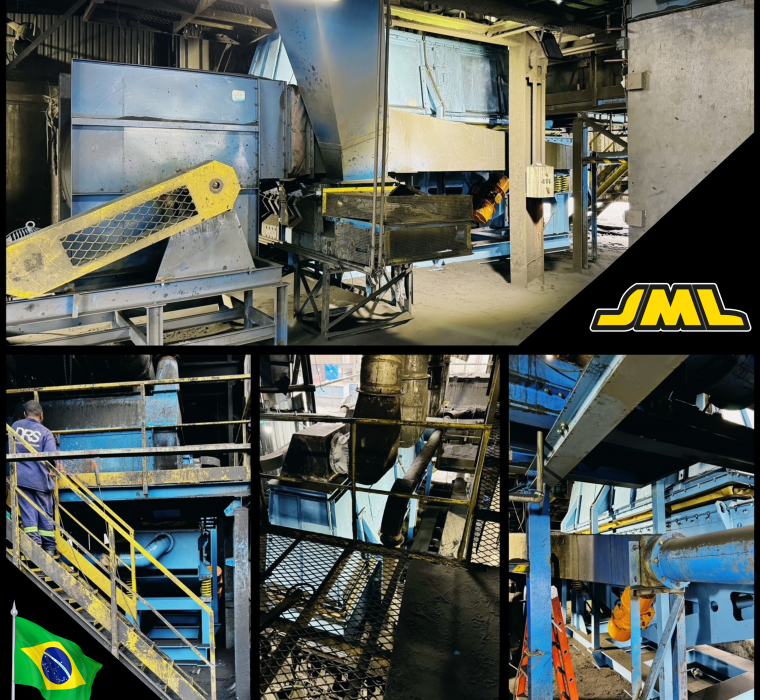
In its ongoing commitment to innovation and foundry process improvement, JML Industrie has installed its latest green sand cooling system at a leading foundry in Brazil. Equipped with a moisture management and control system, the TVR model will significantly enhance our client’s production quality and demonstrates JML Industrie’s technical expertise and commitment to providing cutting-edge solutions. Innovation at the Heart of the Process The TVR model green sand cooler represents the pinnacle of JML Industrie’s technology. Designed to integrate after an existing MU type premixer, this advanced system utilizes a precise mechanism to dose and mix water with sand before entering the fluidized bed cooler. The key to its operation lies in the optimal transfer of calories needed for water evaporation, a critical process to achieve the desired sand quality. The air flow, essential for evaporation, is meticulously managed through a longitudinal chamber beneath the fluidized bed, divided into several compartments equipped with adjustable butterfly valves. This ensures even air distribution and effective evaporation, while maintaining sand integrity through micro-perforated stainless steel sheet panels, thus ensuring increased longevity and system performance. A Highly Advanced Management System At the heart of the TVR cooler lies a sophisticated management system, designed to automatically adjust air and water volumes based on the specific characteristics of the sand, such as weight, temperature, and moisture. This ability to dynamically adapt ensures a consistent output sand quality, meeting the strictest standards required by our client. Exceptional Results The technical data speaks volumes. With a processing capacity of 120 tons per hour and an ambient temperature of 34°C, the system significantly reduces sand temperature from an input of 80-120°C to an output of 34-38°C, while achieving an optimal moisture level of 2.00% ± 0.15. These results attest to JML Industrie’s capability to tackle technical challenges and provide solutions that not only meet but exceed client expectations. For more information about our solutions and how we can help your business achieve its production goals, contact us.
From Flame to Forge : A Journey Through the History of Foundry
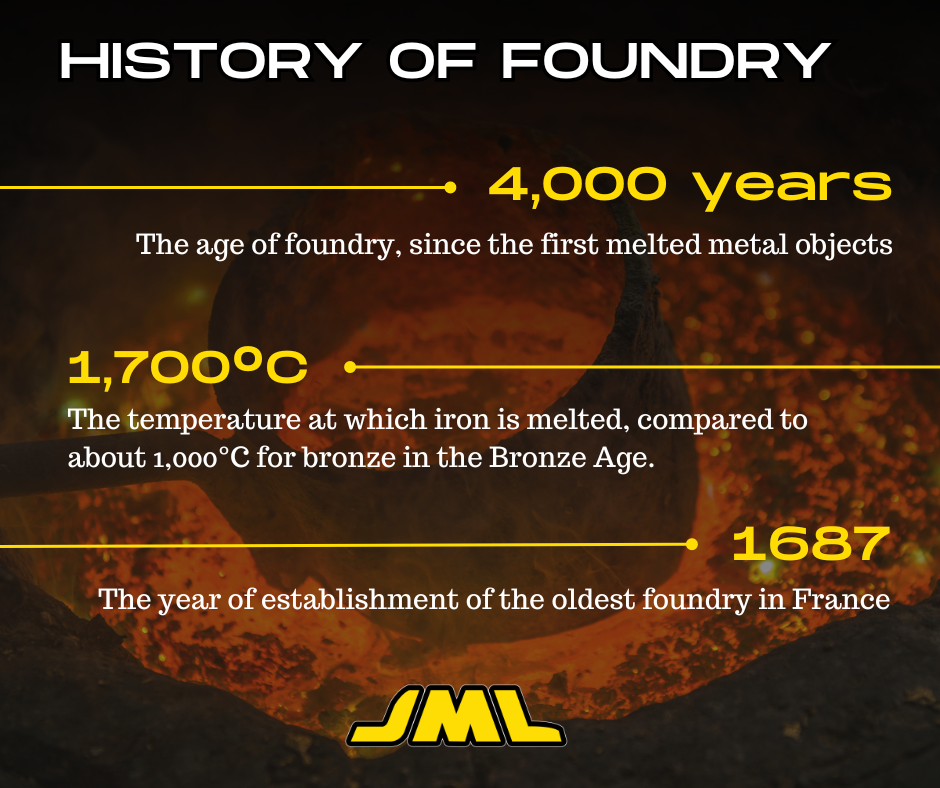
The origins of foundry date back to prehistoric times when our ancestors discovered the potential of fire to shape metals. The earliest foundries were rudimentary: pits dug in the ground, fueled by charcoal, where metals were melted and molded. This technique then refined over millennia, with the introduction of clay furnaces and the use of stone, and then metal molds. 🪙The Bronze and Iron Age The Bronze Age (around 3000 BC) marks a key step, with the alloy of copper and tin to produce bronze, a more resistant and versatile material. Later, the Iron Age introduced an even stronger material, paving the way for new applications and technologies. 💥The Industrial Revolution: A Major Turning Point The 18th century Industrial Revolution was a catalyst for the foundry industry. The invention of the steam engine and the development of mass production techniques allowed the production of metal parts in large quantities and with increased precision. Foundries transformed into industrial facilities, with high-performance furnaces and sophisticated molding techniques. 🌐Today: The Era of Technology and Environment Today, foundries are at the forefront of technology. At JML Industrie, we work on several fronts: ✅ Green Sand Preparation: Advanced systems allow for the preparation of foundry sand with unmatched precision and efficiency, ensuring the quality and finish of the molded parts. ✅ Core Making Equipment: These machines produce complex cores with high precision, enabling the creation of parts with varied and detailed shapes. ✅ Vibrating Machines: They play a major role in the processing and transportation of materials in foundries, increasing productivity and reducing costs. ✅ Environmental Solutions: In a world where sustainability is essential, we develop solutions to minimize the environmental impact of foundries, such as reducing emissions and waste management. Foundry, from its beginnings around a simple campfire 🔥to today’s high-tech industry, is a testimony to human ingenuity. At JML Industrie, we are proud to be part of this story, contributing to the continuous progress of this essential industry.
Efficient core production with JML solutions !
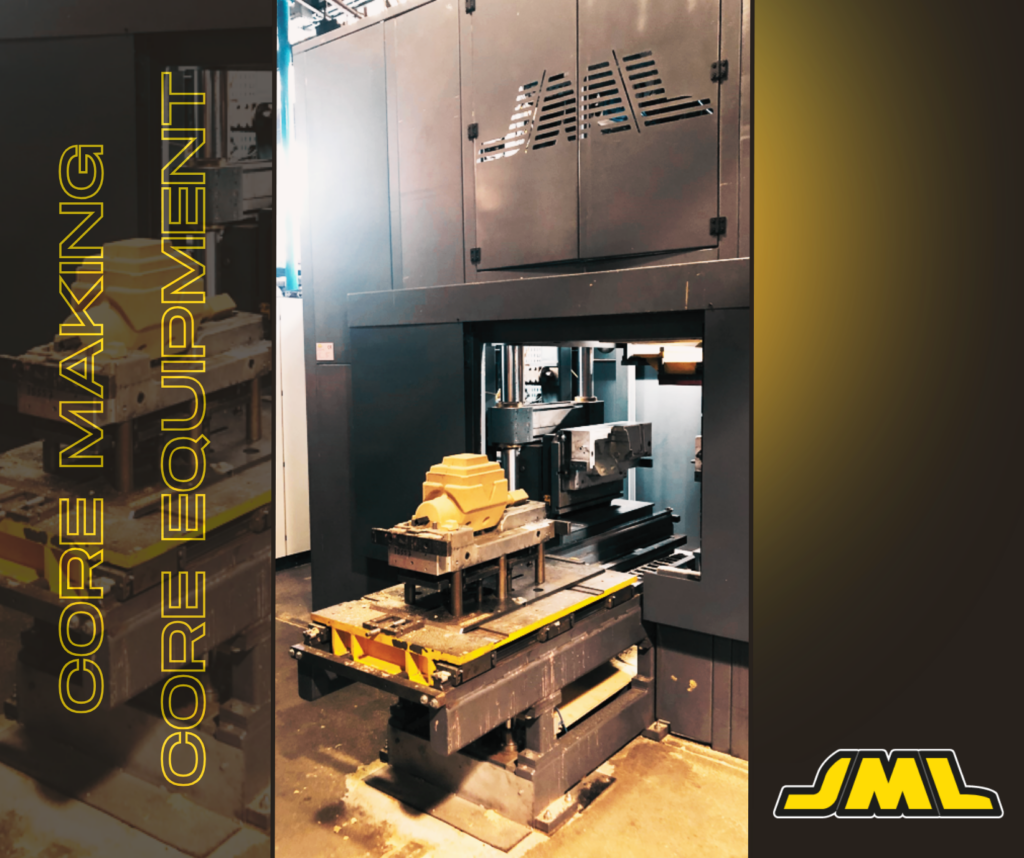
Thanks to the incorporation of FRITZ HANSBERG, we are proud to continue the long tradition of a leading company in the core making sector. Investing in the development and improvement of our range of machines is our goal. The know-how, the long experience of our technicians and the integration of new technologies are allowing us to provide our customers with production cost reducing, fast and reliable machines and core production lines, which meet the requirements of industry 4.0 and are available also in versions with integrated predictive maintenance. Our potential and knowledge of the material allows us to provide turnkey lines capable of managing the entire core production process. Core Production 🏭 Core production is a fundamental phase in foundry processes. Producing them of high quality, with reduced management costs and high efficiencies is a prerogative for us that let us satisfying all the needs of the nowadays and future foundry. Cutting-edge solutions from JML 🚀 Our range of machines and equipment can manage every phase of core making process: Main characteristics of core production equipment JML : ✅ Transport and storage: Reduce air consumption and fines production when transporting sand. ✅ Dosing: Ensure process control for the preparation of a high-quality mixture thanks to the precision of the dosing of all components. ✅ Simplicity and reliability: Choose the simplicity and reliability of our machines. Reduce operation and maintenance costs. ✅ Shoot: Ensure the shoot which has always been the most effective since its invention in 1950. ✅ Gassing: Use one of the most efficient carbonators in the category. ✅ Handling: Use our automatic systems for the deburring, assembly, painting, and core storage phases. Why choose JML ? 🌟 🔧 Custom Solutions: Our equipment is designed to meet the specific needs of each foundry. 🔄 High efficiency: Efficiency and productivity for your core production process. 🌍 World-wide: FRITZ HANSBERG solutions were always used and appreciated by foundries all over the world. Become part of the foundries that have chosen innovation and efficiency with JML ! 💼 Ready to improve your core making process? Contact us today to find out how JML can improve your foundry’s production process🚀
Casting Sand: JML solutions for perfect preparation!
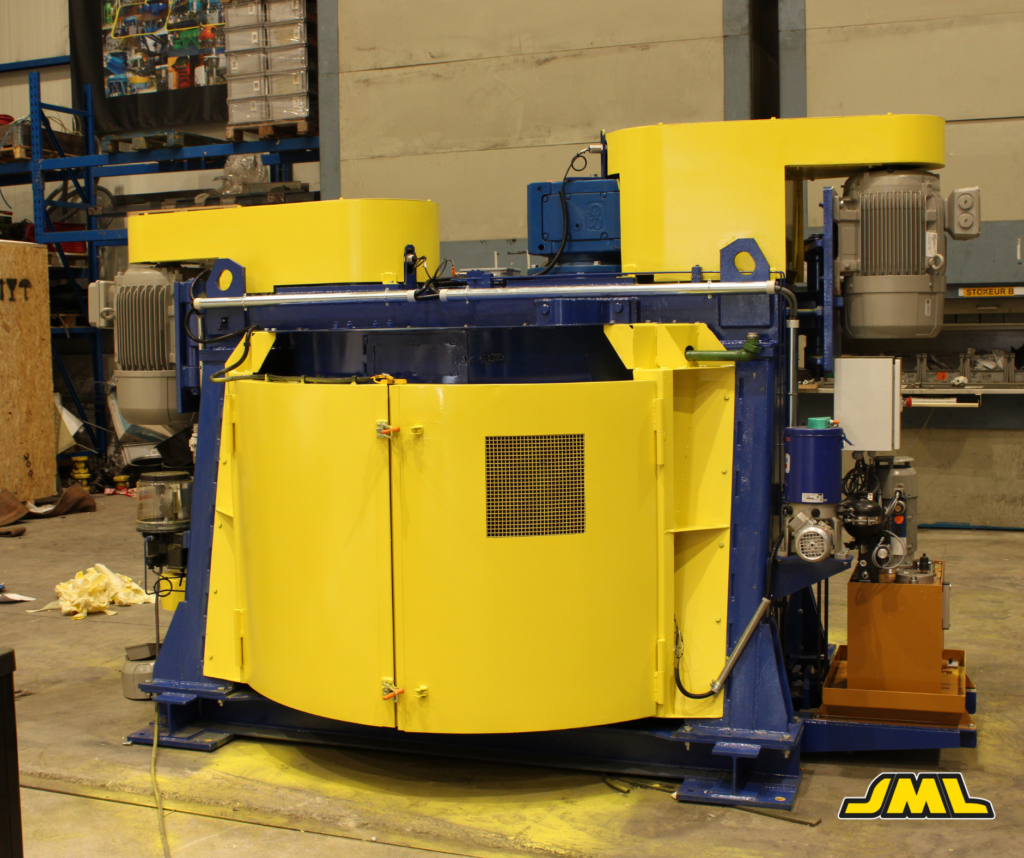
At JML, we understand how crucial homogeneous and efficient preparation of molding sand is to a foundry’s success. It’s the foundation on which the quality, consistency and efficiency of the entire foundry process rests. Investing in technological solutions is not just a strategic choice, but an imperative that positively impacts end-product quality, operational profitability, and the overall sustainability of your business. We are proud to highlight two of our flagship pieces of equipment that promise to optimize your foundry processes. Perfect balance with the JML mixer Much more than just an intensive sand mixer, our rotative pan mixer combines rotary motion with a turbine and mixing blades. This machine ensures rapid, homogeneous preparation of the molding sand, guaranteeing efficient distribution and amalgamation of additives, perfect clots breaking and optimal sand wetting. The side scraper blade continuously conveys the material towards the center, eliminating dead spaces and keeping the side wall of the pan perfectly clean. Two lower scrapers clean the bottom of the pan, ensuring a smooth mixing process. The dry mixing cycle is followed by a wet mixing cycle, guaranteeing consistent quality of the pre Continuous quality with the premixer Our pre-mixer is a continuous humidifier designed specifically to handle foundry return sand, offering homogeneous moisture distribution and optimal additive mixing. Available in four different sizes, each unit is built to last, with a stainless steel bowl, wear-resistant counter-rotating horizontal shafts, and tungsten carbide-coated parts for maximum durability. A pressurized lubrication system, dust-seal boxes and speed control ensure optimum operation. In addition, a stainless steel dust cover facilitates internal access. For further information: https://www.jml-industrie.com/green-sand-foundry/sand-preparation/pre-mixer-homogenizer/ Our equipment is tailor-made to meet the specific needs of our clients. With JML, invest in state-of-the-art technology to maximize your foundry’s efficiency. Contact us today to find out how our equipment can transform your production! Contactez-nous
Maximizing your foundry’s productivity: installing a runner breaker.
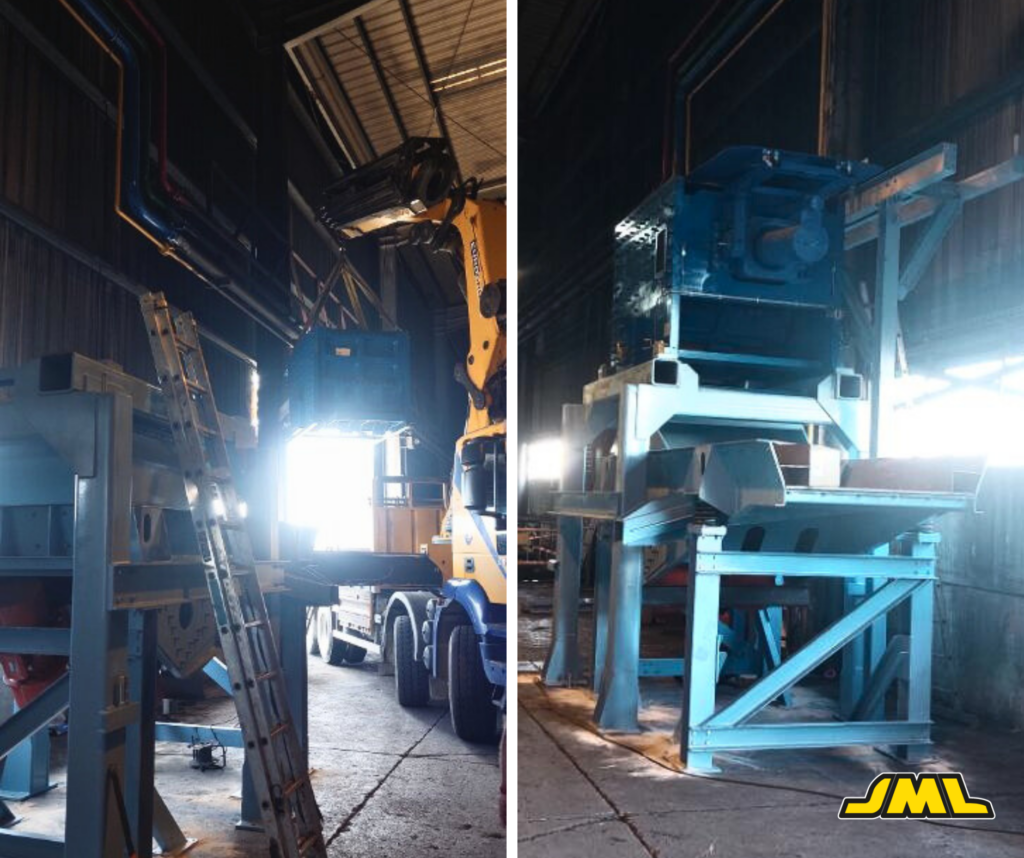
The foundry industry is based on complex processes where every step counts. Our clients, aware of the importance of innovation in improving productivity, quality and profitability, are always on the lookout for innovative solutions. With this in mind, we recently worked with one of our long-standing client to improve its production process with the installation of a high-performance runner breaker. Our solution: a tailor-made runner breaker for optimum results. One of the most common challenges in foundry operations is the management of casting jets, which often require size adjustment. After a careful analysis of our client’s needs and installation, our team of experts designed a custom runner breaker to precisely meet the foundry’s requirements, taking into account the size of the parts to be ground, the required throughput and the quality of the final production. A simple process for impeccable results. The operation of our runner breaker is simple and efficient: castings are transported by a conveyor belt from a vibrating screen to the runner breaker. Inside, the runner breaker performs a precise, controlled size reduction. The advantages of our foundry runner breaker: Benefit#1: Precise, efficient size reduction Our runner breaker offers precise size reduction, a crucial element in ensuring that castings are ready for the next phase of the process, without wasting material. This improvement has a positive impact on the quality of finished products, while generating significant savings in time and costs. Benefit #2: Optimum residue management Below the crusher, a second vibrating screen collects the crushed jets, separating fine sand from other materials thanks to a perforated grid. This function acts like a screen, ensuring that only the necessary elements progress to the skips, reducing waste while optimizing material utilization. Benefit #3: Quick and easy skip changeover Another innovative aspect of our solution is the ease with which the skips can be changed. Mounted on a turntable, skips can be changed quickly and efficiently using a cart, eliminating any loss of time. Benefit #4: Increased profitability At our client’s site, the installation of our foundry runner breaker has led to tangible improvements. Production has become smoother, waste has been reduced and the quality of finished products has risen. These results have had a positive impact on the company’s profitability, strengthening its market position. The installation of a runner breaker at our client’s site is an example of our commitment to working with them to overcome industrial challenges. At JML, we are determined to continue innovating and providing tailor-made solutions to meet the needs of the ever-changing foundry industry. If you would like to find out more about our equipment and services, please do not hesitate to contact us.
Client project : Suction and moisture control of sand
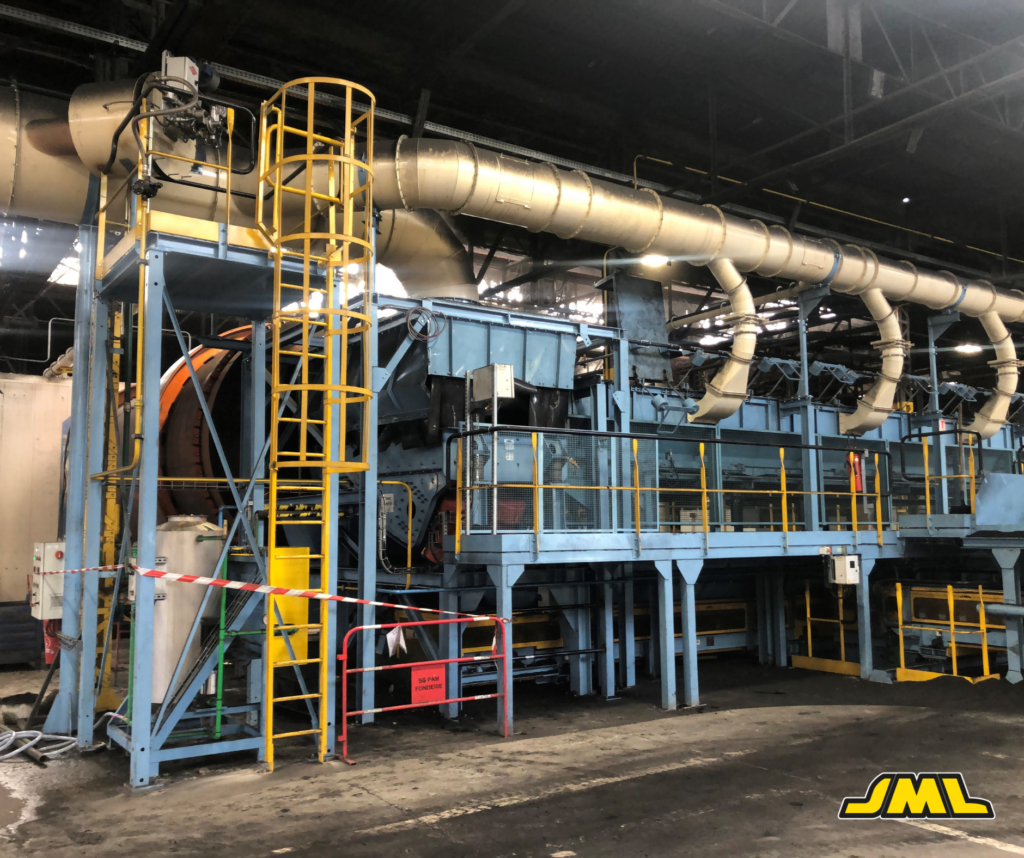
Final phase – Delivery and acceptance of equipment A few months ago, we told you about our latest achievement: the installation of a cooling drum for one of our customers in eastern France. This installation incorporates two specific technology, with the use of a burner within the suction network, the use of a burner within the suction network, aiming to control the suction process and the implementation of our sand moisture management system in the cooling barrel, an essential element of the process molding. Why is sand moisture a major issue in foundry operations? The sand used for molding contain 3% of moisture. When this sand is drawn into the pipes of the suction system, particularly at the level of shake-out, dust loaded with clay associated with humid air can cause blockages and clogging. This reduces suction process efficiency, increases production downtime, and generates unnecessary maintenance costs. Eliminate the moisture with a suction burner To fix this issue, we integrate a burner into the suction network of our client’s sandshop. The main goal is to dry out the air in the suction lines, preventing moisture from disrupting the system’s operations. The burner operates by evaporating excess moisture from the intake air, allowing the dust to circulate more efficiently. Our solution: an automated moisture management system inside the drum We have also set up a device designed by our teams within the cooling drum to manage sand moisture. This system relies on an optimal temperature measurement at the drum inlet, depending on the volume of water initially used. At the outlet of the de-bottlenecking drum, moisture and temperature values are continuously monitored as the sand is transported on the conveyor belt. If necessary, additional water is added in real time to maintain the programmed moisture level. The whole process is fully automated by our teams, which means it requires little maintenance, apart from a periodic check of the moisture sensor to ensure it is properly calibrated. Quality and Economy: Optimize the molding process Implementing a moisture management system as well as the installation of a burner in the dust suctions has many advantages for our client. It optimizes the efficiency of the suction process by reducing obstructions in the pipes, which translates into a significant reduction in production costs. In addition, automatic adjustment of sand moisture ensures consistent molding quality, improving the overall quality of products. If you have any questions or require further information about our moisture management equipment, please do not hesitate to contact us.
NEW AUTOMATION DIVISION
JML Industrie continues its development by internalizing the automation expertise ! Focusing on delivering one stop shop solutions to our clients, we are in a unique position to advise our customers on green sand preparation, core making, air treatment, sand reclamation, vibrating machinery and now automation. Indeed, based in Metz (FRANCE), the automation division allows us to respond to the demands of our partners for the control and regulation of foundry equipment produced and commercialized by JML. Automation supplements our multi-divisionnal organisation that works in synergy to ensure delivery of unmatched end-to-end services. ✔ Complementary design offices with a specialization for each. ✔ A multidisciplinary team bringing together experts in each field ✔ Teams to manufacture prototypes in our production floor and to implement automation ✅ Automation team regularly traveling the world to set up automated systems. ✔ A maintenance network deployed both in Europe and internationally installing industrial machines and offering repair and renovation services With a 360° vision of its business, JML Industrie is mastering the entire process from designing a new machine to a complete renewal of foundry with the aim of optimizing productivity and production quality.
Job offer : Industrial Designer (M/W)
Recycling of foundry sands
Disposal of Waste Foundry Sand (WFS) remains to be one of the significant challenges faced by the foundry industry nowadays. Because they are using large quantities of sand, foundries implementing sand-based molding and core-making processes should consider its recycling as a strategic industrial issue. The distances and transportation costs to landfills are increasing for foundry companies, which is why alternatives to the environmentally friendly treatment of this waste became a key issue for foundries. Approximately 100 million tons of waste foundry sands (WFS) are generated annually worldwide by the foundry industry and around 70% of recycling sand cans could be use as new sand (source: Climaxion). This recycling approach is even more important as foundries deal with an increasing demand of this natural resource while volumes extracted from deposits are continuously reduced. Reclamation of waste foundry sand can be done 2 ways namely, mechanical, and thermal reclamation (as JML Industrie operates). This treatment is particularly efficient for chemical sand as it allows us to recover up to 95% of the sand used within the foundry. In addition, thermal sand reclamation appears to be a great solution face to environmental issues: low energy consumption (gas) and limited pollutants discharges into the air. Even if it could be considered as expansive and quite difficult to implement, a thermal reclamation plant should be considered as a long-term and suitable investment. Our team at JML Industrie, helps foundries, depending on their needs and market, to select the most appropriate equipment for their business. More information: https://www.jml-industrie.com/environmental-solutions/
Green sand molding challenges and best practice
How have green sand molding requirements changed over the years? Over the past 20 years, the requirement of quality, in particular but not only, by users in the automotive sector, are the source of modernizing the structures of technological readiness of existing green sand plants. The quality and characteristics of molding sand as it was conceived in the recent past, now is not acceptable. The cadences of the installations of green sand molding, both type flaskless vertical and/or horizontal separation, as well as those using the flask molding, can be managed only if the technical characteristics of the green sand are kept in accordance with the programmed values within limits very tight.In short, it must always comply with the necessary values in the green sand used for the molding, even in the presence of a great variability of the different characteristics in the return sand from the shakeout.At the same time, one of the consequences of the recent crisis was that, to alleviate the drastic reduction in the value of sales, general business and foundries in particular, have devoted their efforts, with a production substantially reduced in order to maintain where possible, the necessary margin of profit by reducing production costs.Said target can be achieved mainly by reducing the consumption of raw materials and minimizing the number of defective castings or scrap.Space, in response to these needs, collaborating with some of its traditional customers, has developed an important research work on the optimization of equipment and controls achieving, without large investments, very positive results. Optimal molding sand preparation A good molding sand, where it is intended to feed a vertical flaskless molding line, in our experience should appear with the following values: Compressive strength gr/cm2 2,300 ± 50 Shear strength gr/cm2 550 ± 25 Moisture % 3.2 ± 0.1 Compatibility % 40 ± 2 Permeability gr/cm2/m 100 ± 5 The data above shows the behaviour of the temperature of the green sand before and after treatment with an installation of MU + TVR Space 120 T/h, installed in a foundry which produces exclusively for an important automotive industry.It is obvious the excessively uneven temperature behaviour at the inlet with values varying between 65÷125 ° C while the output values found are stable between 25÷35 ° C. A document, prepared by one of our customers, from which we have the consent and permission for its disclosure, provides information of a confidential nature relating to the production and confirms the remarkable economy seen after the investment made with the installation of the system Space, as well as the improved quality of castings and reduced casting scrap. Effective treatment of return sand Regardless of the type of the installation of molding, the return sand will always suffer for substantial changes in the values of flow rate, temperature and residual moisture.For years, the continuing need to improve the quality of green molding sand, always in coincidence with the increase of the production of the plant, it is taken for granted the need to optimize both equipment and facilities for the correct preparation of molding green sand. In the market appeared coolers, pre-coolers, mixers, vibrating fluid bed coolers, cooling mixers … etc. all controlled by more or less complex control equipment.You could say that to the market appeared more manufacturers than ideas.So you could say in a more direct way and, as always happens in all areas, that from an idea many copies were created. Introduction of additives in the pre-mixer The technical department of studies and projects Space, with more than 49 years of experience in the preparation of the green molding sand, but above all, thanks to the collaboration of our most demanding customers, has developed an innovative technological process. A process started and already experienced for years in many installations. This process ensures the management and control best suited to the regeneration and development of for green molding sand. Below we provide a summary of the experience gained through innovation and checked step by step in the practical exercise of the treatment of the molding sand. Managing hot and dry return sand It is desirable to reduce the temperature at least to 34÷38 °C and humidity values about 2÷2,3%. The temperature and humidity of the return sand can vary within a wide range of values, as well as the flow rate or capacity of the preparation plant. In order to decide, for the most accurate corrective actions, it is essential to obtain the instantaneous values of temperature, humidity and flow rate of the system. A temperature probe PT 100, located and protected in a very thin support, not to suffering from excessive thermal inertia, measures the temperature of the return sand. A capacitive radiofrequency probe SPACE “PGF” provide a continuous measurement of moisture in the return sand. A system of continuous weighing, applied on the conveyor belt, grant a continuous measurement of the return sand weight. A set of temperature sensors and moisture, installed at the outlet of the cooler, ensure the measuring of the sand temperature and the humidity. All probes, through an analogue to digital conversion circuit, are connected to a PLC. A program developed and adapted specifically for each application ensures a fully automatic operation of plants. A feedback system, based on a PID algorithm, ensures the constant maintenance of the characteristics of programmed values within narrow limits of variability. The above graphs display the parameters before and after (see blue arrow indicates the date before / after) of an installation System Space: The evolution of the temperature of the sand at the beginning of the mixing cycle. The amount of water added in each cycle. The required mixing time after introducing water into the mixer The data correspond to a foundry, equipped with a green sand molding plant with two mixers, which was originally not equipped with premixing and cooling system. It is evident that the lowering of the temperature from 55/65 ° C at levels of 25/30 ° C, together with further optimization of the moisture
